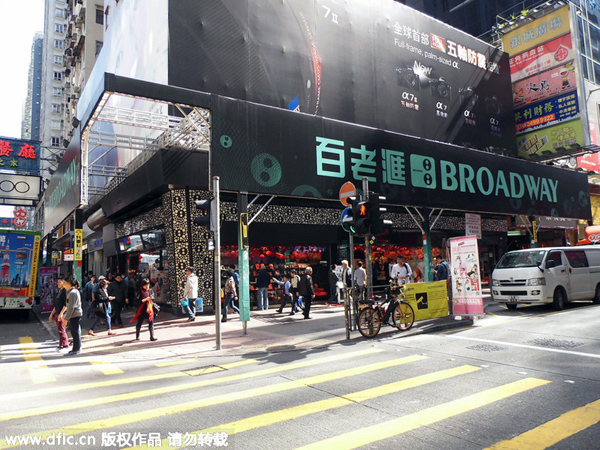The challenge of parallel trading in HK
Updated: 2015-04-16 07:46
By Dan Steinbock(China Daily)
|
||||||||
 |
|
Photo taken on Jan 21, 2015 shows a commercial street in Hong Kong, a city which has attracted many tourists from the Chinese mainland for its shopping opportunities. [Photo/IC] |
This week the Ministry of Public Security took action to restrict visitors to the Hong Kong Special Administrative Region after the increase in day-trippers and traders buying goods in the city led to weeks of protests. As Shenzhen authorities announced a limit on cross-border trips by the city's residents, Hong Kong Chief Executive Leung Chun-ying issued a warning against parallel traders. Concurrently, the multiple-visit permit will be replaced by a new one-visit-per-week permit.
What will be the effect of the policy change?
"Parallel traders" buy their supplies in Hong Kong, which does not charge a goods and services tax, and then sell them on the mainland in small quantities to avoid paying import duties. The trading focuses mainly on packaged foods, infant products, cosmetics and personal care items, such as shampoo. It is not exactly a luxury business.
One friction point involves Sheung Shui, a town close to Shenzhen, where residents claim that the increase in parallel importers has pushed up retail prices and is causing nuisance. In contrast, the importers argue that their trade benefits Hong Kong's economy and they do have a point.
Will the policy changes reduce the number of parallel traders?
In 2014, Hong Kong received some 47 million visitors from the mainland, which accounted for three out of every four visitors. Day trips accounted for a record 60 percent of the total and contributed to a third of all retail sales in Hong Kong.
But things may be changing.
During the Chinese New Year, the number of visitors fell for the first time in two decades. And during the Tomb Sweeping Day holiday, arrivals from the mainland plunged 14 percent. In 2014, the current multiple-entry scheme drew 14.9 million visitors from the mainland. The new policy could slash their number to 4.6 million a year, that is, by 30 percent. Will Hong Kong's economy suffer as a result of the policy change?
Presumably, the policy targets mainly the "career parallel traders" and won't affect Shenzhen residents who have been granted multiple-entry visas into Hong Kong.
- Global health entering new era: WHO chief
- Brazil's planning minister steps aside after recordings revelation
- Vietnam, US adopt joint statement on advancing comprehensive partnership
- European border closures 'inhumane': UN refugee agency
- Japan's foreign minister calls A-bombings extremely regrettable
- Fukushima impact unprecedented for oceans: US expert

 Stars of Lijiang River: Elderly brothers with white beards
Stars of Lijiang River: Elderly brothers with white beards
 Wealthy Chinese children paying money to learn British manners
Wealthy Chinese children paying money to learn British manners
 Military-style wedding: Fighter jets, grooms in dashing uniforms
Military-style wedding: Fighter jets, grooms in dashing uniforms
 Striking photos around the world: May 16 - May 22
Striking photos around the world: May 16 - May 22
 Robots help elderly in nursing home in east China
Robots help elderly in nursing home in east China
 Hanging in the air: Chongqing holds rescue drill
Hanging in the air: Chongqing holds rescue drill
 2.1-ton tofu finishes in two hours in central China
2.1-ton tofu finishes in two hours in central China
 Six things you may not know about Grain Buds
Six things you may not know about Grain Buds
Most Viewed
Editor's Picks

|

|

|

|

|

|
Today's Top News
Liang avoids jail in shooting death
China's finance minister addresses ratings downgrade
Duke alumni visit Chinese Embassy
Marriott unlikely to top Anbang offer for Starwood: Observers
Chinese biopharma debuts on Nasdaq
What ends Jeb Bush's White House hopes
Investigation for Nicolas's campaign
Will US-ASEAN meeting be good for region?
US Weekly

|

|







